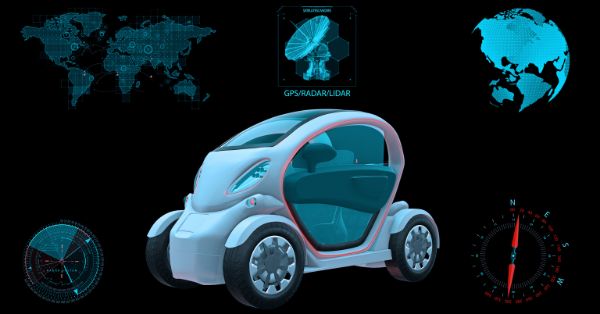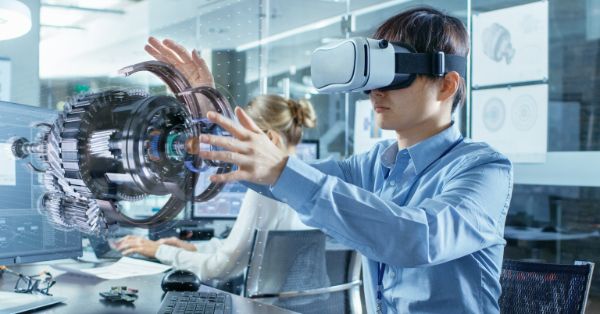As new technology continues to advance at a rapid pace, it is crucial to stay informed about the latest advancements. In this article, we will delve into five groundbreaking new technologies: Artificial Intelligence, Autonomous Vehicles, Virtual Reality, 3D Printing, and Blockchain Technology. Each of these technologies has the potential to revolutionize the future and reshape our lives.
Table of Content:
Artificial Intelligence
What is Artificial Intelligence?
Artificial Intelligence (AI) is the emulation of human intelligence in machines, enabling them to perform tasks without explicit instructions. AI involves machine learning, reasoning, and self-correction capabilities.
AI technology manifests in various forms, including virtual assistants, self-driving cars, and facial recognition software.
Impact on Society
AI is poised to bring about transformative changes across numerous sectors. In healthcare, AI can analyze vast amounts of medical data to aid in disease diagnosis. In finance, AI can identify fraudulent activities and enhance customer service.
The potential impact of AI extends to education, transportation, and customer service, among other fields.

Concerns and Challenges
As with any technological advancement, AI raises ethical concerns. These include potential job displacement, privacy issues, and biases in decision-making. Addressing these concerns and ensuring the responsible integration of AI into society is of paramount importance.
Autonomous Vehicles
What are Autonomous Vehicles?
Autonomous vehicles are self-driving cars that employ artificial intelligence, sensors, and GPS to navigate roads without human intervention.
These vehicles gather data from sensors and cameras, analyze it, and make decisions based on their analysis.

Advantages and Disadvantages
Autonomous vehicles offer several benefits, including reduced accidents, improved traffic flow, and enhanced accessibility for individuals who are unable to drive. However, they also pose challenges such as technical difficulties, lack of regulation, and concerns about reliability.
Challenges and Solutions
Implementing autonomous vehicles necessitates overcoming certain challenges, such as developing dependable technology, establishing a legal framework, and ensuring public trust. Potential solutions include continuous testing and improvement, increased regulation, and public education.
Virtual Reality

Definition and Explanation
Virtual Reality (VR) refers to computer-generated simulations of three-dimensional environments that users can interact with using specialized equipment. VR provides highly immersive experiences and can replicate various environments and scenarios.
Current and future applications of VR span diverse fields, including gaming, education, and healthcare.
Applications in Different Fields
In the medical field, VR can be employed for medical student and surgeon training, as well as for treating specific phobias and mental health conditions. VR also holds the potential to revolutionize tourism by offering virtual travel experiences.
Issues and Possible Improvements
Ethical concerns related to VR include addiction, detachment from reality, and negative psychological effects. Addressing these concerns necessitates better regulation, increased research, and education on responsible use.
3D Printing

Overview and Explanation
3D printing is a process wherein three-dimensional objects are created from digital files by depositing successive layers of materials, such as plastic or metal.
In the medical field, 3D printing finds application in creating prosthetics and dental implants, among other uses.
Advantages and Disadvantages
The advantages of 3D printing include cost savings, customization options, and reduced waste. However, there are also environmental concerns associated with the disposal of unused materials and the scalability of 3D printing.
Future Outlook
Predicted advancements in 3D printing include faster printing times, larger print volumes, and the ability to fabricate more complex objects. 3D printing has the potential to shape the future of manufacturing and contribute to sustainability efforts.
Blockchain Technology

Explanation and Definition
Blockchain technology is a decentralized digital ledger that securely and transparently records transactions. It is most commonly recognized for its association with digital currencies like Bitcoin.
Blockchain offers benefits such as enhanced security, transparency, and the ability to bypass intermediaries.
Applications and Use Cases
Blockchain finds applications across various fields, including banking and financial services, supply chain management, and healthcare. It facilitates faster and more cost-effective transactions, improved tracking of goods, and increased operational efficiency.
Challenges and Opportunities
Although blockchain technology is gaining popularity, challenges such as scalability, regulation, and standardization still need to be addressed. With appropriate solutions, blockchain has the potential to revolutionize transactional processes and safeguard our information.
Conclusion
In conclusion, these five new technologies possess the power to revolutionize the future and redefine our way of life. It is crucial to remain abreast of the latest advancements and engage in discussions regarding the challenges and opportunities they bring forth.










